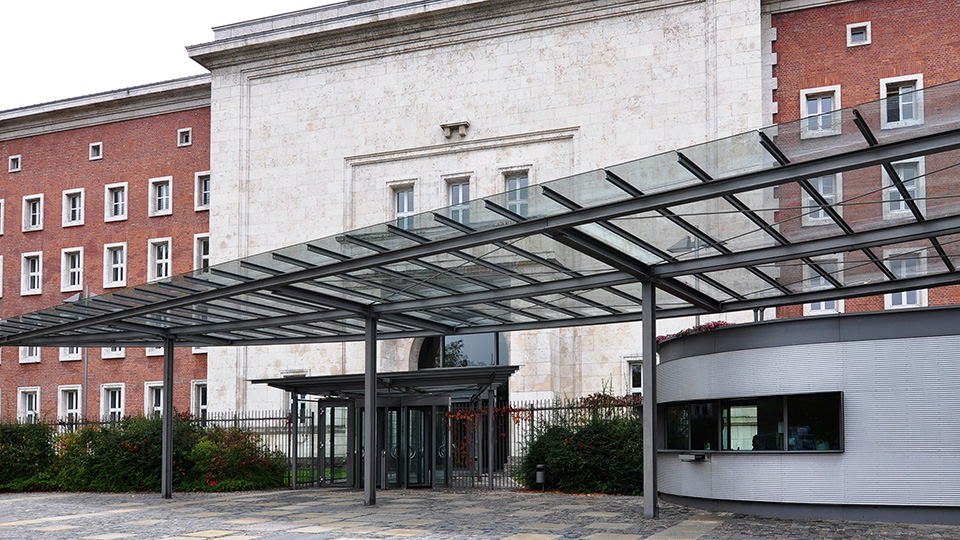The Federal Office , , From a Federal Authority to a Federal Office
This content is also available in
The history of the Federal Office, which has been the subject of change, reflects the events and developments in policy on refugees and asylum nationwide, down to current events in migration and integration.
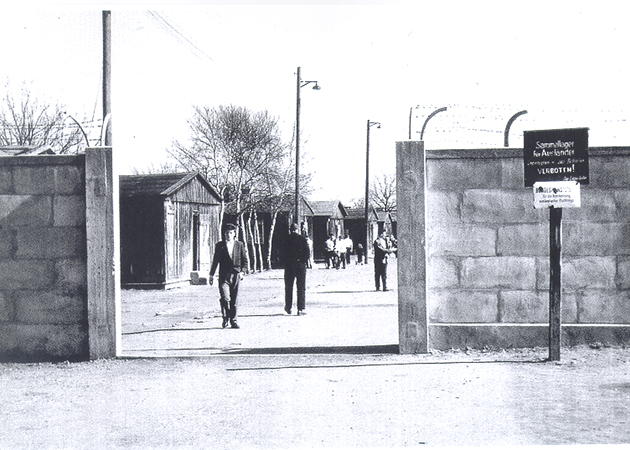 A historical photograph of the Valka Camp in Langwasser
Source: BAMF
A historical photograph of the Valka Camp in Langwasser
Source: BAMF
The history of the Federal Office began in 1946 at the end of the Second World War with the United Nations Relief and Rehabilitation Administration (UNRRA) organising accommodation for homeless foreign nationals, or displaced persons, in the premises of the former prisoner of war camp at Langwasser. At first, it was primarily Latvians and Estonians who were accommodated in the premises made available by the US armed forces. The inmates named the camp Valka, after the border town that was divided between the Latvians and Estonians following the First World War.
With most of the original inmates having emigrated to America by 1947, the UNRRA's successor organisation passed the Valka Camp to the newly founded German refugee authorities.
The Federal Authority for the Recognition of Foreign Refugees
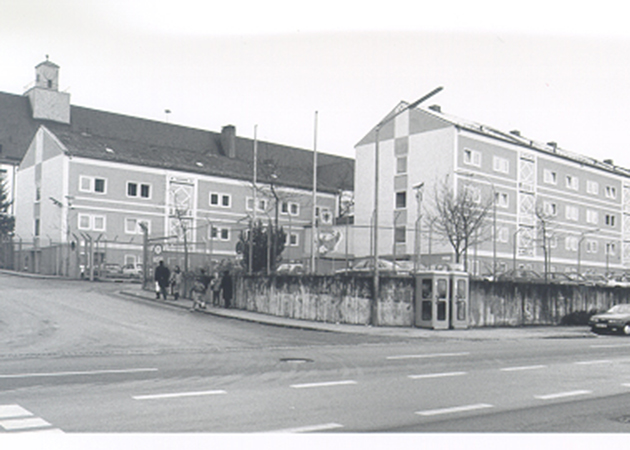 The former office building in Zirndorf is now a branch office
Source: BAMF
The former office building in Zirndorf is now a branch office
Source: BAMF
With the adoption of the Convention concerning the Legal Status of Refugees, the Geneva Convention, in 1953, the Federal Authority for the Recognition of Foreign Refugees was founded. This authority, which was subsequently to become the Federal Office, and its 40 employees were responsible from this point on for refugees' asylum applications. These refugees also lived in the Valka Camp, in the new federal holding camp for foreigners, where they were looked after until a decision was made about where they would finally live.
The Valka Camp was closed in May 1960. The remaining refugees were then accommodated in the former police barracks at Zirndorf, which had been used for the purpose of accommodating refugees since as early as 1955. The Government had set up two new accommodation buildings there. The Federal Authority's employees followed a year later to work in the newly built administration building.
The Federal Office for the Recognition of Foreign Refugees
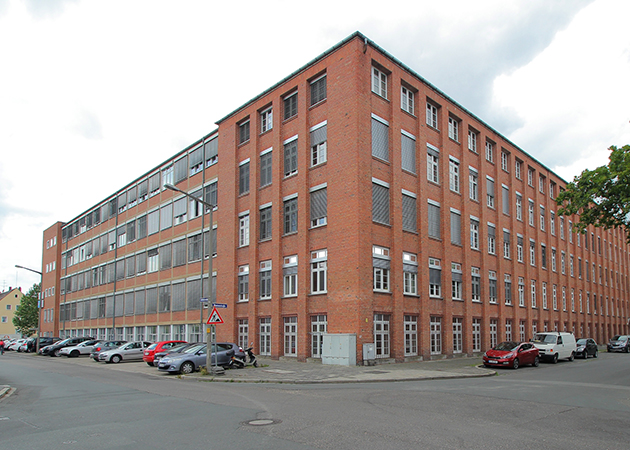 Exterior view of the skill-building centre in Nuremberg
Source: BAMF
Exterior view of the skill-building centre in Nuremberg
Source: BAMF
With the passing of the Foreign Nationals Act on 28 April 1965, the Federal Authority was renamed the Federal Office for the Recognition of Foreign Refugees. Apart from the events of the "Prague Spring", which caused a wave of refugees, the number of asylum applications remained at a low level for the employees, who now numbered approximately 60.
The number of asylum applications drastically increased with the civil-war-like circumstances in Turkey in 1974 and reached a record of over 100,000 applications in 1980, of which 55,000 applications were from Turkish nationals alone. The Federal Office took action. The authority was expanded, employing 240 staff by 1980. The holding camp with officially only 450 places was regularly overcrowded.
With the collapse of the Soviet Union and the subsequent flood of refugees, the numbers of asylum applications continued to increase. In 1992, approximately 438,000 people applied for asylum in the Federal Republic of Germany. This high number of asylum applicants resulted in organisational changes and an increase in staff. The Federal Office set up a total of 48 branch offices in the Federal Länder and employed over 4,000 staff in this period.
Having leased several different office buildings for the headquarters in the municipal area of Nuremberg, the Federation moved the main offices to Nuremberg-Langwasser with effect from 1993. At the end of 1996, the Federal Office moved its 800 staff to its present headquarters in Frankenstraße – an address steeped in history; known throughout the town as the "Südkaserne" (Southern Barracks).
Following the asylum compromise, adopted in 1993, the number of asylum applications has fallen sharply. An extensive restructuring process for the Federal Office for the Recognition of Foreign Refugees followed, reaching its climax with the implementation of the Immigration Act in 2005. The Federal Office for Migration and Refugees evolved out of the Federal Office for the Recognition of Foreign Refugees.
The Federal Office for Migration and Refugees
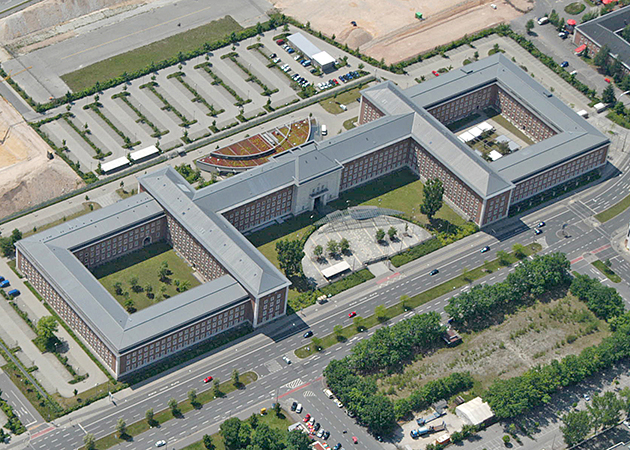 Aerial view of the Southern Barracks in Nuremberg, today the headquarters of the BAMF.
Source: BAMF
Aerial view of the Southern Barracks in Nuremberg, today the headquarters of the BAMF.
Source: BAMF
As a result of the Immigration Act (Zuwanderungsgesetz), in addition to the asylum process, the new Federal Office for Migration and Refugees also took on extensive tasks in integration and migration. Some existing tasks were also centralised at the Federal Office such as maintaining the Central Register of Foreigners and other tasks in the area of voluntary return. As a result, over the past decade, the Federal Office has developed from being purely an asylum authority to a centre of excellence for migration and integration.
The Federal Office is represented all over Germany via its decentralised structure comprising branch offices, arrival centres and decision-making centres in each of the Federal Länder. The Federal Office's staff was increased to 7,300 full-time-equivalent posts in 2016. The staff included individuals who were directly employed by the BAMF. Over and above this, almost 1,600 full-time-equivalent posts allocated and seconded from different Federal agencies, as well as from Vivento, Deutsche Post, the Bundeswehr and the Federal Employment Agency, provided temporary support in reducing backlogs, in "waiting rooms" and in mobile units.
The number of asylum-seekers has rapidly increased in recent years, with 442,000 refugees entering the country in 2015.

